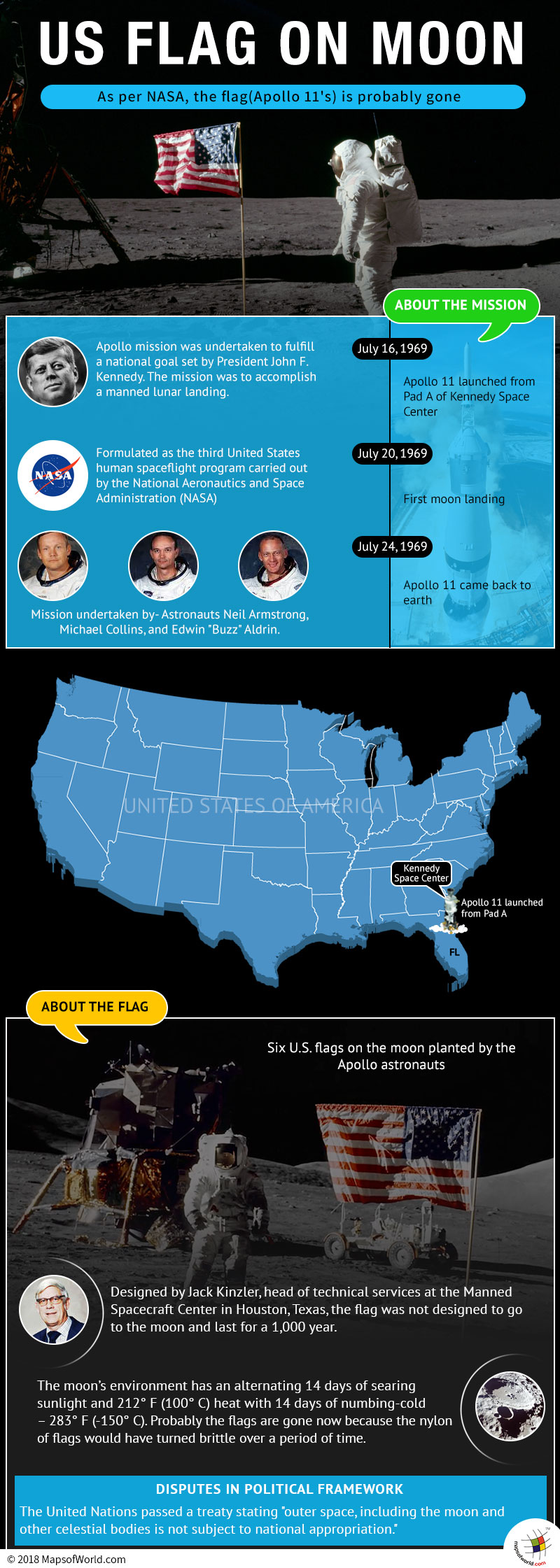Is the US flag still standing on the moon?
As per NASA, the flag (Apollo 11’s) has most likely disintegrated.
The Apollo Program, also known as Project Apollo, aimed to fulfill a national goal set by President John F. Kennedy in 1961 when he addressed Congress about manned lunar landing and returning the astronauts back on earth safely.
The association of the US with lunar landings is empirical. Despite being unsuccessful in the 1967 mission, the Apollo 11 mission was formulated as the third United States human spaceflight program carried out by the National Aeronautics and Space Administration (NASA) in 1969.
The Apollo 11 mission was undertaken by the trio of; Neil Armstrong, Michael Collins, and Edwin “Buzz” Aldrin. On July 16th, 1969, the spacecraft was launched from Pad A of the Kennedy Space Center. The first moon landing was on July 20th, 1969. Apollo 11 came back to earth on July 24th, 1969, splashing down at 812 nautical miles southwest of Hawaii, and 12 nautical miles from the aircraft carrier, USS Hornet.
There are six U.S. flags on the moon planted by the Apollo astronauts (Apollo’s 11, 12, 14, 15, 16, and 17). But planting a flag on the moon was not as easy as it seems. There were political implications. According to Anne Platoff, the United Nations had passed a treaty stating, “outer space, including the moon and other celestial bodies, is not subject to national appropriation.”
Lack of atmosphere on the moon makes the flapping of the flag impossible. It is believed that each flag was deliberately designed with a unique distinction…on investigation, it was discovered that the horizontal stripes on the US flag were deliberately rippled to give it the look of a flapping flag.
Designed by Jack Kinzler, head of technical services at the Manned Spacecraft Center in Houston, Texas, the flag was not designed to go to the moon and last for a 1,000 year. As with ordinary flags, prolonged exposure to the ultraviolet rays of the sun would have bleached out the color. The moon’s environment – alternating 14 days of searing sunlight at 212° F (100° C) heat, followed by 14 days of numbing cold – 283° F (-150° C) and darkness make the survival tough.
Over the years, the nylon would have turned brittle and disintegrated. Scientists think there is very little chance of the flags still remaining intact after 40 years of exposure to the moon’s environment.
Visit the following to learn more about the USA:
Related Maps and Info:






